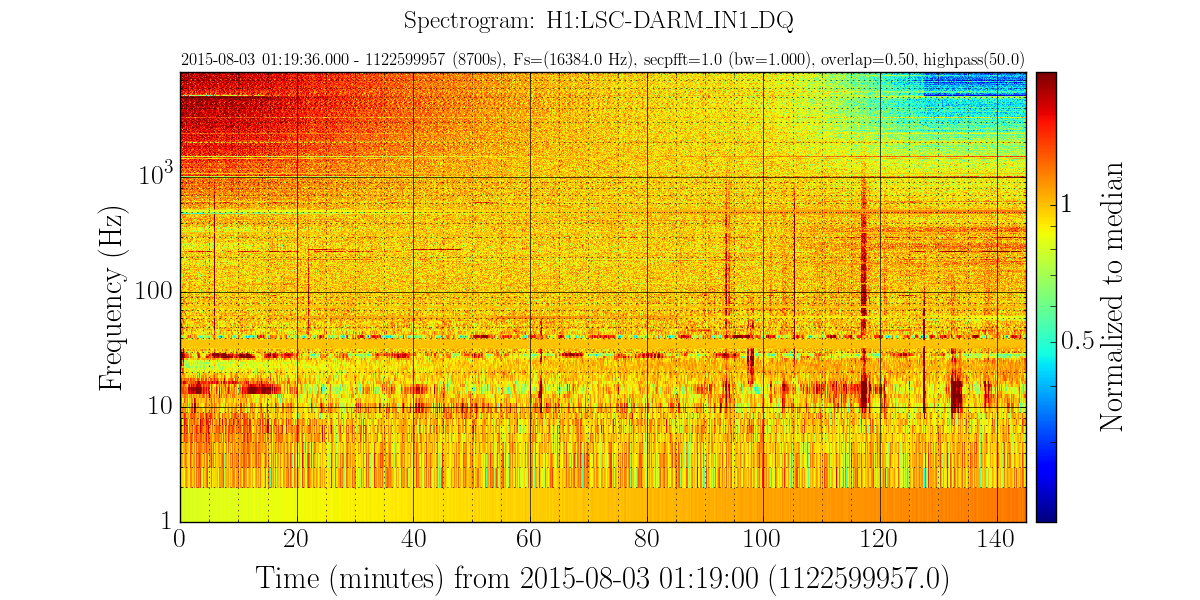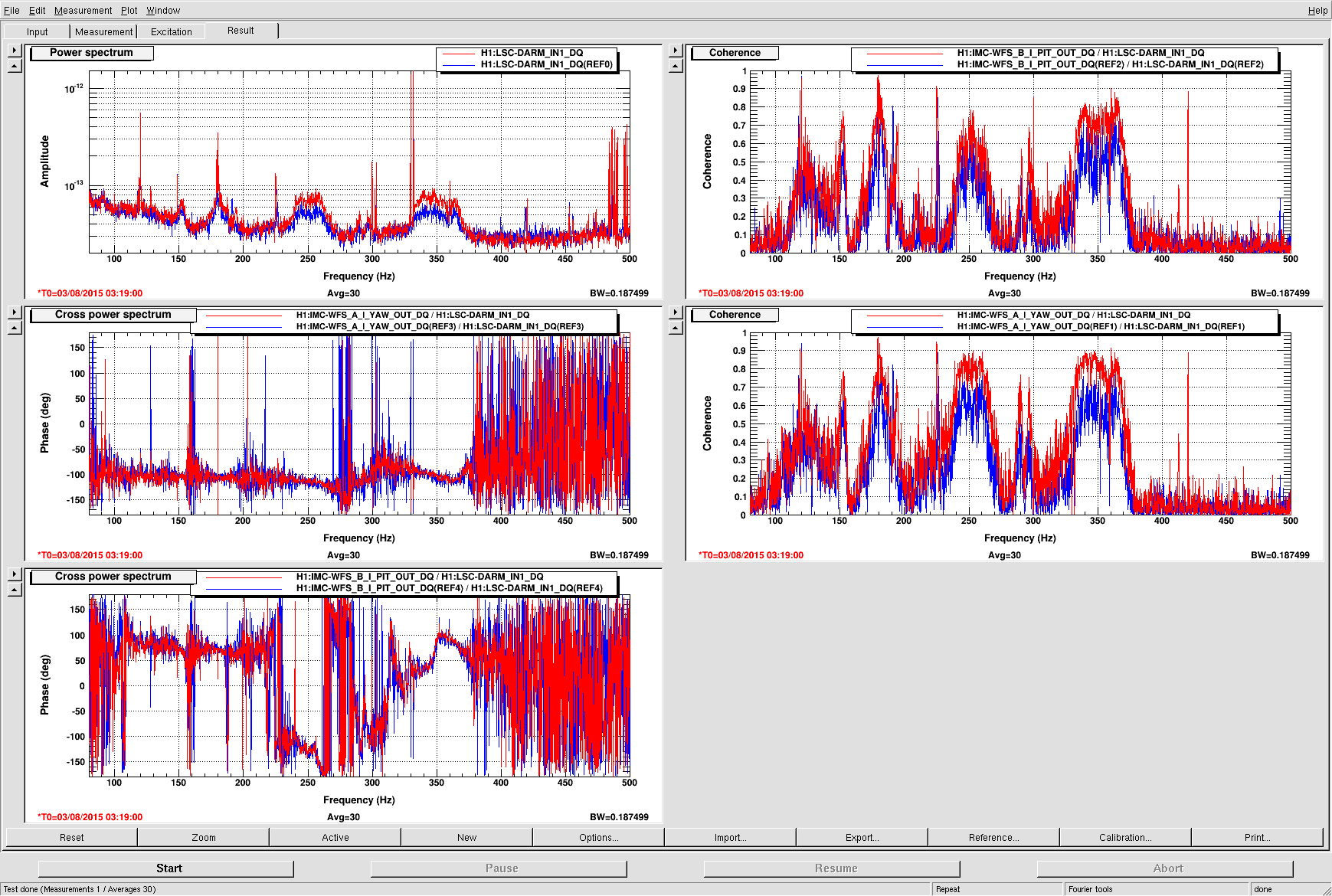I looked back at the first TCS X slewing that Kiwamu, Stefan, and I did at the start of August. It seems that during this slewing, there was no null of the IMC jitter coupling. On the other hand, we already know that the coupling passes through a null close to the beginning of each lock stretch (22208).
First, the caveats: (1) the ISS outer loop was off during this test, and (2) one can see that the shape and location of the jitter peaks is different from what we normally observe in DARM.
The first attachment is a normalized spectrogram of DARM error during the slewing. It can be seen that the jitter peaks around 250 and 350 Hz increase monotonically from start to finish.

As a check, I looked again at the complex coherence between the IMC WFS error signals and DARM at the beginning and the end of this test (at 01:19:00 and 03:19:00, 2015-08-03 Z). Unlike what we see at the start of each lock, there is no sign flip of the coupling:

This seems to indicate that thermal tuning of the X arm alone is not enough to minimize the coupling. Either the null that we see at the beginning of each lock cannot be reached by thermal tuning, or we need thermal compensation on both arms.



































